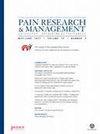Prevalence and Risk Factors of Work-Related Upper Extremity Disorders among University Teaching Staff in Ethiopia, 2021: An Institution-Based Cross-Sectional Study
IF 2.5
3区 医学
Q2 CLINICAL NEUROLOGY
引用次数: 7
Abstract
Background Work-related upper extremity disorders (WRUEDs) are aches, pains, tension, and discomfort in the neck, shoulders, arms, wrists, hands, and fingers. The situation is escalating in educational sectors due to a lousy working environment intertwined with extracurricular deeds. However, empirical evidence focusing on academicians in higher education society is negligible. The purpose of this study is to examine the prevalence and risk factors of WRUEDs among university teaching staff in Ethiopia. Materials and Methods We conducted a cross-sectional study design from March to April 2021. A sample of 607 academicians were recruited using a stratified sampling technique, and a self-administered structured Nordic Musculoskeletal questionnaire was used to assess upper extremity disorders during the past 12 months. The collected data were entered into EpiData version 4.6 and analyzed using STATA version 14 software. The association between dependent and independent variables was computed with a binary logistic regression. The association was ascertained using an adjusted odds ratio (AOR) with a 95% confidence interval (CI) at a p value of <0.05. Results A total of 607 participants correctly completed the questionnaire (response rate of 95.44%). Age ranges from 21 to 70 with a mean of 32.39 (SD ± 6.80)) years, and the majority (76.28%) of them were males. The prevalence of WRUED during the last 12 months was 59.14% [95% CI (55.1, 63.1)]. There is no significant difference in prevalence between males and females (45.14% versus 14%), respectively; χ2 = 0.001; p=0.974. Working more than 8 hours per day [AOR: 2.37; 95% CI (1.40, 4.00)], not performing physical exercise [AOR: 2.34; 95% CI (1.6, 3.45)], and job dissatisfaction [AOR: 2.50; 95% CI (1.69, 3.68)] were factors significantly increased the risk of experiencing WRUEDs. Conclusion This study divulged upper extremity disorder among university teaching staff is pervasive, with more than three-fifth of the academicians were suffering from the condition, and it also indicates that males experienced higher proportions of pain than females. The manifestation of upper extremity disorder was affected by working hours per day, physical activity, and job satisfaction. Optimizing working hours, having a group regular exercise, and proper management of workplace conditions related to job satisfaction are recommended to lessen the condition.2021年埃塞俄比亚大学教职员工中与工作相关的上肢疾病的患病率和风险因素:一项基于机构的横断面研究
背景:与工作相关的上肢疾病(WRUEDs)是指颈部、肩部、手臂、手腕、手和手指的疼痛、紧张和不适。由于恶劣的工作环境和课外活动交织在一起,教育领域的这种情况正在加剧。然而,关注高等教育社会的学者的经验证据可以忽略不计。本研究的目的是调查埃塞俄比亚大学教学人员中wrued的患病率和危险因素。材料与方法我们于2021年3月至4月进行了横断面研究设计。使用分层抽样技术招募了607名院士,并使用自我管理的结构化北欧肌肉骨骼问卷来评估过去12个月的上肢疾病。收集的数据输入EpiData 4.6版本,使用STATA version 14软件进行分析。因变量和自变量之间的关联用二元逻辑回归计算。使用校正优势比(AOR)确定相关性,95%置信区间(CI) p值<0.05。结果共607人正确填写问卷,答复率为95.44%。年龄21 ~ 70岁,平均32.39 (SD±6.80)岁,男性居多(76.28%)。过去12个月WRUED患病率为59.14% [95% CI(55.1, 63.1)]。男性和女性的患病率无显著差异(分别为45.14%和14%);χ2 = 0.001;p = 0.974。每天工作超过8小时[AOR: 2.37;95% CI(1.40, 4.00)],不进行体育锻炼[AOR: 2.34;95% CI(1.6, 3.45)]和工作不满意度[AOR: 2.50;95% CI(1.69, 3.68)]是显著增加wrud发生风险的因素。结论上肢障碍在高校教职员工中普遍存在,超过五分之三的教职员工患有上肢障碍,且男性上肢疼痛的比例高于女性。上肢障碍的表现受每天工作时间、体力活动和工作满意度的影响。通过优化工作时间、定期进行集体锻炼、妥善管理与工作满意度相关的工作环境等措施,可以缓解这种情况。
本文章由计算机程序翻译,如有差异,请以英文原文为准。
求助全文
约1分钟内获得全文
求助全文
来源期刊

Pain Research & Management
CLINICAL NEUROLOGY-
CiteScore
5.30
自引率
0.00%
发文量
109
审稿时长
>12 weeks
期刊介绍:
Pain Research and Management is a peer-reviewed, Open Access journal that publishes original research articles, review articles, and clinical studies in all areas of pain management.
The most recent Impact Factor for Pain Research and Management is 1.685 according to the 2015 Journal Citation Reports released by Thomson Reuters in 2016.
 求助内容:
求助内容: 应助结果提醒方式:
应助结果提醒方式:


